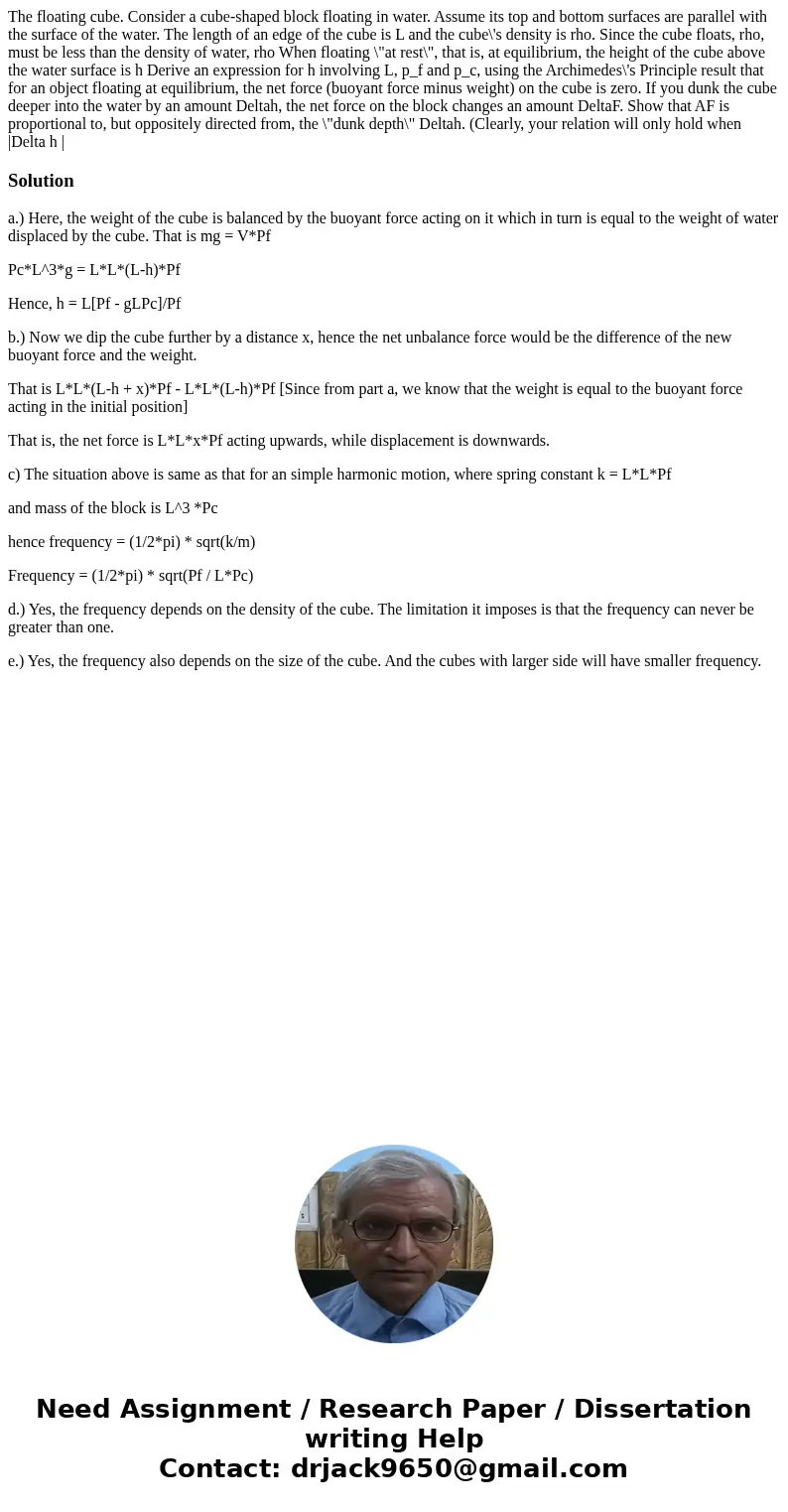The floating cube Consider a cubeshaped block floating in wa
Solution
a.) Here, the weight of the cube is balanced by the buoyant force acting on it which in turn is equal to the weight of water displaced by the cube. That is mg = V*Pf
Pc*L^3*g = L*L*(L-h)*Pf
Hence, h = L[Pf - gLPc]/Pf
b.) Now we dip the cube further by a distance x, hence the net unbalance force would be the difference of the new buoyant force and the weight.
That is L*L*(L-h + x)*Pf - L*L*(L-h)*Pf [Since from part a, we know that the weight is equal to the buoyant force acting in the initial position]
That is, the net force is L*L*x*Pf acting upwards, while displacement is downwards.
c) The situation above is same as that for an simple harmonic motion, where spring constant k = L*L*Pf
and mass of the block is L^3 *Pc
hence frequency = (1/2*pi) * sqrt(k/m)
Frequency = (1/2*pi) * sqrt(Pf / L*Pc)
d.) Yes, the frequency depends on the density of the cube. The limitation it imposes is that the frequency can never be greater than one.
e.) Yes, the frequency also depends on the size of the cube. And the cubes with larger side will have smaller frequency.

 Homework Sourse
Homework Sourse